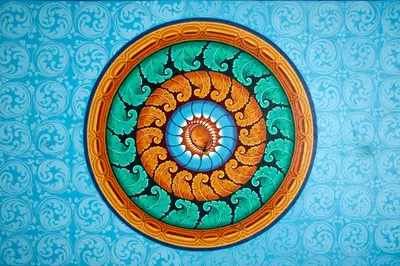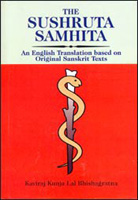Where Does Ayurveda Come From?

Ayurvedic medicine has a rich history. Originally shared as an oral tradition, Ayurveda was recorded more than 5,000 years ago in Sanskrit, in the four sacred texts called the Vedas: the Rig Veda (3000-2500 BCE), Yajur Veda, Sam Veda, and Atharva Veda (1200-1000 BCE).
 Ayurvedic theory states that all areas of life impact one's health, so it follows that the Vedas cover a wide variety of topics, including health and healthcare techniques, astrology, spirituality, government and politics, art, and human behavior.
Ayurvedic theory states that all areas of life impact one's health, so it follows that the Vedas cover a wide variety of topics, including health and healthcare techniques, astrology, spirituality, government and politics, art, and human behavior.
Ayurvedic medical books, available by the eighth century BCE, provide not only procedural instructions but also a history of how Ayurvedic medicine evolved over time. Current knowledge about Ayurveda is primarily based on "the great triad" of texts called Brhattrayi, which consists of the Charak Samhita, Sushurta Samhita, and Ashtanga Hridaya. These books describe the basic principles and theories from which modern Ayurveda has evolved.
Major Ayurvedic classics: Brhattrayi
Charak Samhita by Charaka
Charak Samhita, which dates back to approximately 800 BCE, is a major compendium of Ayurvedic medical theory and practice that Charaka, an internist at the University of Taxila, compiled in Sanskrit. Presented as poetry, Samhita contains more than 8,400 verses in its 120 chapters. Modern Ayurvedic physicians still use Samhita in their medical training, and the text has been widely translated. The most widely recommended translation is one by Dr. P.V. Sharma, which contains extensive appendices and a rich index.
 Sushruta Samhita by Sushruta
Sushruta Samhita by Sushruta
This surgical text, which dates back to approximately 700 BCE, contains seminal content such as the Ayurvedic definition of health, information on blood, and the description of five subdoshas of Pitta and the marma points. This volume also includes pioneering techniques in skin grafting and reconstructive surgery.
Ashtanga Sangraha and Ashtanga Hridaya by Vagbhata
Ashtanga Sangraha and Ashtanga Hridayam, dating back to approximately 400 CE, were written by an Ayurvedic physician from the Sindh region of India. The Sangraha is primarily written in poetry, while The Hridayam is presented as prose. These texts define the five subdoshas of Kapha and emphasize the material value of life. The Hridaya is still highly regarded as a primary Ayurvedic medical textbook; Srikantha Murthy's translation is recommended for English readers.
Minor Ayurvedic classics: The Lghutrayi
Sarangadhar Samhita by Sharngadhara
This text was written in the 13th century CE, and is valued for its explanation of the Ayurvedic concept of materia medica, as well as for its pharmacological formulations. It is also considered the foremost text on pulse diagnosis.
Bhav Prakash Nighantu by Bhavamisra
This 16th-century text contains approximately 10,278 verses of varying meters and focuses on herbal descriptions, food, the therapeutic use of trace metals, and rejuvenation therapies. Information on sexually transmitted diseases, particularly syphilis, is also included.
Madhava Nidan by Madhava Kara
This text was written between 700 CE and 1100 CE, and is valued for its precise classification of diseases and disease etiology, particularly in the fields of bala (pediatrics) and toxicology.Madhava Nidan is considered the Bible for Ayurvedic clinical diagnosis.

